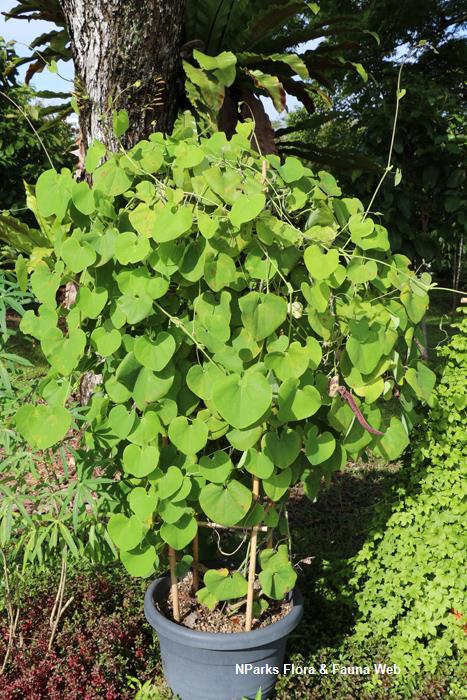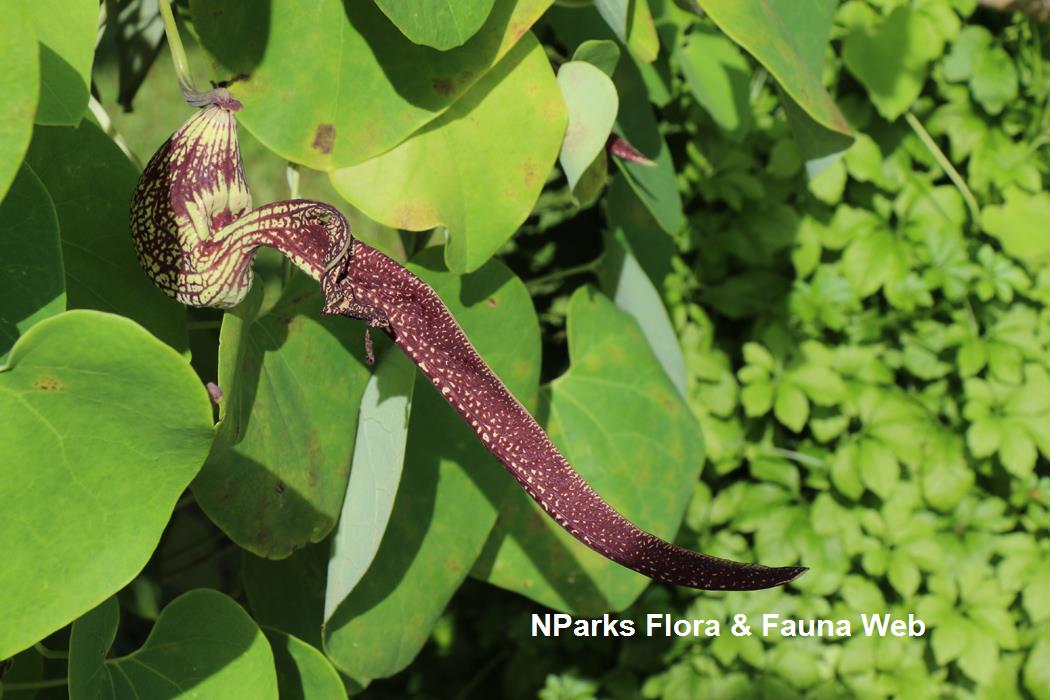
Back
Aristolochia ringens Link & Otto.
| Family Name: | Aristolochiaceae |
| Common Name: | Gaping Dutchman's Pipe |
Name
Classifications and Characteristics
| Plant Growth Form | Climber |
|---|---|
| Lifespan (in Singapore) | Perennial |
| Maximum Height | 6 m to 9 m |
Biogeography
| Native Distribution | Tropical America |
|---|---|
| Native Habitat | Terrestrial |
| Preferred Climate Zone | Tropical |
Description and Ethnobotany
| Growth Form | Vine with a climbing or sprawling growth habit. |
|---|---|
| Foliage | Leaves are round to bean-shaped with entire leaf margin. Venation is slightly sunken. |
| Flowers | Large flowers (18 - 25 cm long) have a unique shape that resembles the pitchers of carnivorous plants in the genus Nepenthes. They are yellow-green and heavily streaked with a netlike pattern of dark purple markings. |
| Habitat | Occurs in tropical rainforests. |
| Cultivation | This species grows relatively quickly and is highly adaptable. It tolerates dry to wet soils and shade to full sun. Propagate by seed. |
| Etymology | The specific epithet "ringens" is Latin for snarling. It refers to the resemblance of the flowers to an open mouth. |
| Ethnobotanical Uses | Medicinal: The roots are used to treat snake bites. |
Landscaping Features
| Desirable Plant Features | Ornamental Flowers |
|---|
Fauna, Pollination and Dispersal
| Fauna Pollination Dispersal Associated Fauna | Butterfly Host Plant |
|---|
Plant Care and Propagation
| Light Preference | Semi-Shade, Full Sun |
|---|---|
| Water Preference | Moderate Water |
| Plant Growth Rate | Fast |
| Propagation Method | Seed, Stem Cutting |
Foliar
| Foliage Retention | Evergreen |
|---|---|
| Mature Foliage Colour(s) | Green |
| Foliar Type | Simple / Unifoliate |
| Foliar Attachment to Stem | Petiolate |
Floral (Angiosperm)
| Flower Colour(s) | White, Brown |
|---|---|
| Flower Symmetry | Bilateral |
Image Repository
Others
| Master ID | 22 |
|---|---|
| Species ID | 1318 |
| Flora Disclaimer | The information in this website has been compiled from reliable sources, such as reference works on medicinal plants. It is not a substitute for medical advice or treatment and NParks does not purport to provide any medical advice. Readers should always consult his/her physician before using or consuming a plant for medicinal purposes. |
















.jpg)
